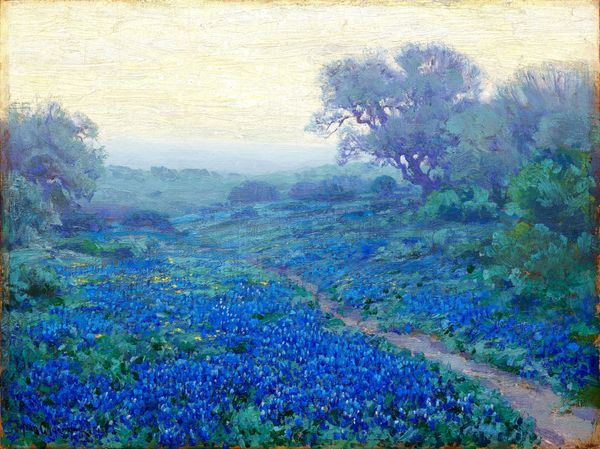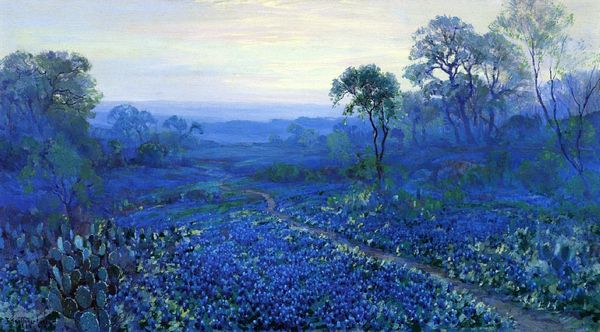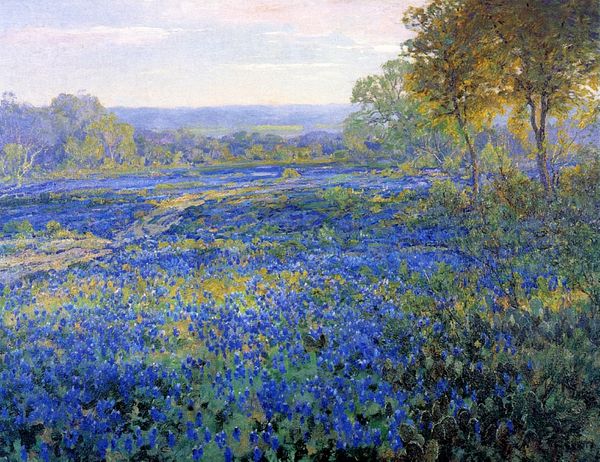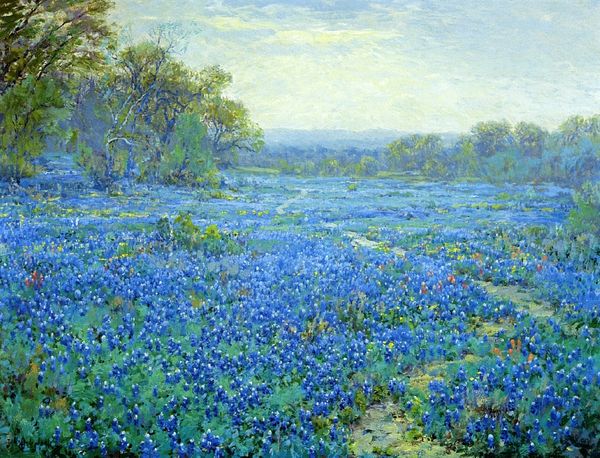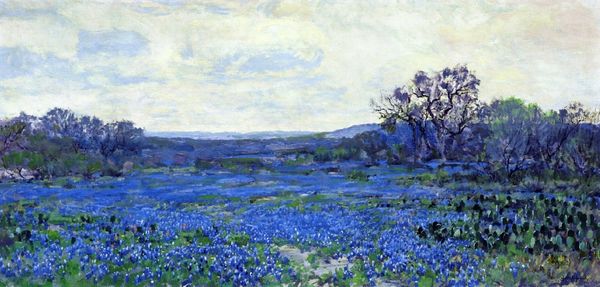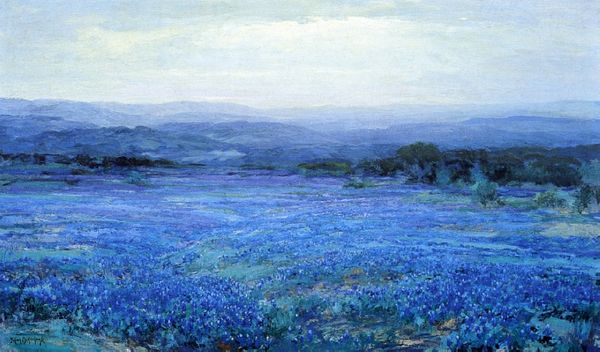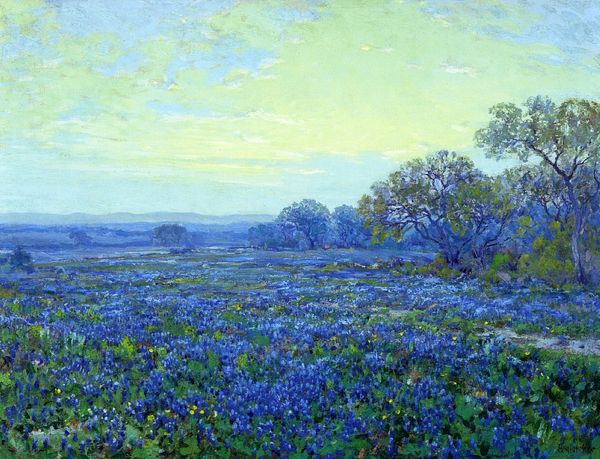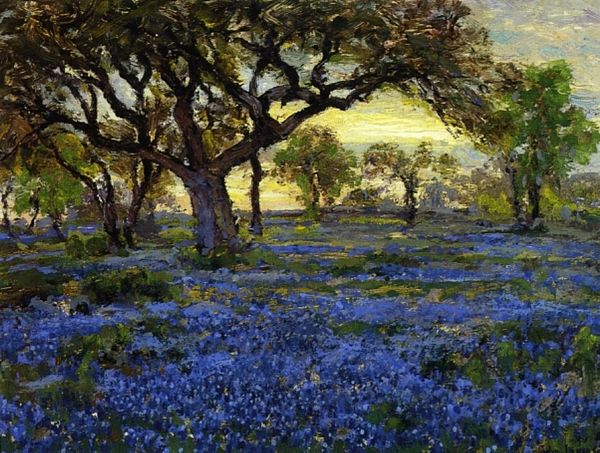
plein-air, oil-paint
#
impressionism
#
plein-air
#
oil-paint
#
landscape
#
impressionist landscape
#
nature
#
oil painting
#
nature
Copyright: Public domain
Curator: Looking at this artwork, "Field of Texas Bluebonnets and Prickly Pear Cacti", one is struck by the vibrant colors. It just bursts with that blue, which seems to go on forever. Editor: It really does, doesn’t it? Almost overwhelming. I get a sense of heat, too. The prickly pear scattered throughout seems like nature’s subtle warning signs. Curator: Precisely. Onderdonk employed plein-air techniques to capture the essence of the Texas landscape. This process, painting outdoors, directly confronting the light and environment, accounts for that immediacy. We are given the means through his method. Editor: Absolutely. And the application of paint; you can practically feel the heat shimmering off those prickly pears. It feels so authentic, unfiltered somehow. I wonder what kind of labor went into lugging all that painting gear around in that Texas heat, what the working conditions for painters were, and where he bought the pigment... questions to ponder. Curator: It prompts questions about the consumption of landscapes, too. Onderdonk painted a very particular view, celebrating, perhaps, an idealized version of the Texas landscape, and it served to promote settlement and development of the land. He provided views, which then facilitated land use. Editor: So the canvas, like a pretty picture promoting an idealized notion, had direct impact on Texas? Art shaping the tangible world... Makes one pause. And ponder. Curator: Indeed. The materiality of oil paints combined with a potent cultural context… That provides the essence. Editor: Yes. Art and life all mixed in the field. It leaves me grateful for these little visual pathways, offering an observation point to pause in this world. Curator: A great landscape painting serves a very specific purpose; it offers ways to reexamine our own.
Comments
No comments
Be the first to comment and join the conversation on the ultimate creative platform.

